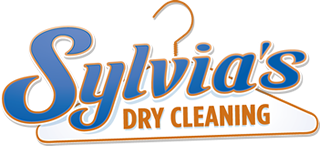 The following are some great tips on the selection and handling of wedding gowns from the National Cleaners Association. Talk to us at Sylvia’s for advice and ideas for preservation or recreation. Many of our customers like to save their gowns to be made into future christening outfits, or to eventually pass down to their own children. Careful selection and handling before, during, and after your big day will help make sure you can treasure your dress for years to come!
The following are some great tips on the selection and handling of wedding gowns from the National Cleaners Association. Talk to us at Sylvia’s for advice and ideas for preservation or recreation. Many of our customers like to save their gowns to be made into future christening outfits, or to eventually pass down to their own children. Careful selection and handling before, during, and after your big day will help make sure you can treasure your dress for years to come!
Selection Tips for Wedding Gowns
- Check the serviceability of sequins, beads, crystals and other decorative trims, even some of the most exclusive designers can be cavalier about this.
- Glued on trim will never hold up as well as trim that is sewed on.
- Check the sewing of trim work. Make sure it is carefully executed so beads don’t start dropping off as the bride marches down the aisle.
- Make sure there is a care label sewn into the dress, and avoid labels that say “spot clean” or “dry clean exclusive of ornamentation”.
Handling Your wedding gown before the big day.
- Hang your gown on the loops sewn into the gown that are connected to the side seams. Do not hang the dress by delicate shoulder straps.
- Hang it someplace safe – away from sunlight, ventilation ducts and sharp edges.
- Select a place that household pets and children won’t be able to get near it.
- Protect gown with unbleached muslin gown cover.
- Apply perfume and hair sprays before putting the gown on! Also allow these products to dry.
- When handling the dress wear clean white cotton gloves and remove jewelry that might result in snagging.



 At Sylvia’s, we know stains. Whether it’s blood, mud, or our favorite — red wine — the number one thing you can do when it happens is to immediately BLOT the stain — do not rub, or you will merely make it worse. Despite the old wives tales about club soda, a paper towel dampened with plain water is fine. Be sure to put a towel behind the stain, then begin blotting. If the garment is a”Dry Clean Only” or requires special care, the faster you bring it into us, the better the chance we can eradicate it with our enzyme solutions.
At Sylvia’s, we know stains. Whether it’s blood, mud, or our favorite — red wine — the number one thing you can do when it happens is to immediately BLOT the stain — do not rub, or you will merely make it worse. Despite the old wives tales about club soda, a paper towel dampened with plain water is fine. Be sure to put a towel behind the stain, then begin blotting. If the garment is a”Dry Clean Only” or requires special care, the faster you bring it into us, the better the chance we can eradicate it with our enzyme solutions.
 If you are like many Americans, you’re bound to have a few items around the house that can’t be laundered in the weekly wash. And while you may have detected the faint whiff of chemicals when you picked up your freshly dry cleaned sweater last week, perhaps you didn’t think much of it. But it’s something to be concerned about.
If you are like many Americans, you’re bound to have a few items around the house that can’t be laundered in the weekly wash. And while you may have detected the faint whiff of chemicals when you picked up your freshly dry cleaned sweater last week, perhaps you didn’t think much of it. But it’s something to be concerned about.